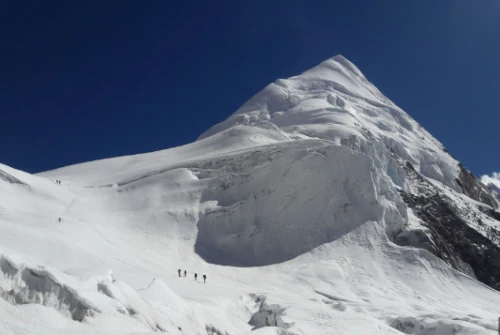Trip Overview
Mera Peak stands proudly at an impressive elevation of 6,476 meters (21,247 feet), making it the highest officially classified trekking peak in Nepal. Located in the heart of the Himalayan Khumbu region, this majestic peak sits to the south of Mount Everest and is part of the Makalu Barun National Park. The allure of Mera Peak climbing lies in its accessibility, scenic diversity, and panoramic Himalayan views, all of which attract trekkers and mountaineers from around the world.
For those seeking to climb Mera Peak, it presents an exciting yet achievable challenge. Unlike more technical ascents like Island Peak or Lobuche East, climbing Mera Peak in Nepal requires only basic mountaineering skills. It’s considered a non-technical trekking peak, though climbers do need to be familiar with the use of ice axes, crampons, and ropes. This makes Mera Peak for beginners a possibility, provided they have prior trekking experience, good physical fitness, and a strong acclimatization plan.
The Mera Peak climb takes you through remote and pristine valleys, rhododendron and bamboo forests, and traditional Sherpa villages. As you ascend higher, the trail traverses glacial terrain and high alpine ridges before reaching the summit. One of the most iconic features of the Mera Peak summit day is the reward it offers on a clear morning, climbers witness a breathtaking panoramic view of five of the world’s tallest peaks: Mount Everest (8,848m), Lhotse (8,516m), Makalu (8,485m), Cho Oyu (8,188m), and Kanchenjunga (8,586m).
This unique perspective, often described as one of the best mountain views in the world, is what makes the Mera Peak expedition so unforgettable. The feeling of standing on top of Nepal’s highest trekking peak, surrounded by the silent majesty of the Himalayas, is indescribable.
Following the classic Mera Peak route, your journey begins with a scenic trail to Kothe, a peaceful village in the Hinku Valley, and then continues to Thaknak, a traditional grazing area surrounded by dramatic Himalayan scenery. From there, you trek to Khare, the primary base for Mera Peak climbers, where you’ll spend a vital acclimatization day resting, hydrating, and preparing for the challenges ahead.
Once acclimatized, the trail ascends through Mera La Pass, across glacial terrain to Mera Base Camp, and onward to High Camp (approx. 5,800 m), offering breathtaking views of Everest, Lhotse, Makalu, and Kanchenjunga. The final summit push begins early, leading you to the 6,476 m peak with its stunning Himalayan panorama. After celebrating at the summit, you descend to Khare and continue towards Kothe, following a different trail via Thuli Kharka for fresh views. Finally, crossing Zatrwa La Pass brings you back to Lukla, marking the end of your unforgettable expedition.
Whether you're planning to embark on the Mera Peak itinerary, 12 days, or the full Mera Peak climbing 15-day package, the journey combines elements of adventure, cultural interaction, and high-altitude wilderness. The elevation of Mera Peak demands serious attention to altitude-related issues, and thus, professional guidance and proper pacing are crucial.
The best time to climb Mera Peak is during the spring (April to May) and autumn (October to early December) when the skies are clear and the trails are dry. Trekkers often ask, “Can I climb Mera Peak in December?” Yes, but it requires excellent gear and cold tolerance, as the region experiences freezing temperatures during winter.
Whether you're aiming to climb Mera Peak as your first high-altitude expedition or planning to combine it with Island Peak, Baruntse, or the Everest Base Camp (EBC) trek, this journey is a gateway to the Himalayas in its purest form. Mera Peak is more scenic and accessible for trekkers transitioning into alpine climbs.
In short, Mera Peak Nepal offers a rare mix of adventure, achievement, and cultural immersion. It is a perfect stepping stone for future climbs in the Himalayas or elsewhere in the world. If you’re looking for an unforgettable adventure in the mountains, this expedition should be at the top of your list.

Why Choose the Mera Peak Expedition?
The Mera Peak Expedition is ideal for those seeking a blend of high-altitude trekking and introductory mountaineering. What makes Mera Peak so appealing is that it is classified as a trekking peak by the Nepal Mountaineering Association (NMA), meaning it does not require advanced climbing skills, yet still offers the thrill of scaling a Himalayan giant. The summit stands at 6,476 meters, making it the highest trekking peak in Nepal.
What sets Mera apart from other peaks is the panoramic summit view; it's one of the best in the entire Himalayas. From the top, we can gaze upon five of the world’s six highest peaks: Mount Everest (8,848m), Lhotse (8,516m), Makalu (8,485m), Kanchenjunga (8,586m), and Cho Oyu (8,188m). These giants line the horizon in a way that feels almost surreal.
The route is remote, which allows us to deeply connect with nature and the unique cultures of the Rai and Sherpa people. The peaceful trails, dense forests, and dramatic alpine landscapes create an experience that is as much spiritual as it is physical. Overall, you can choose Mera Peak for the following reasons:
Highest Trekking Peak in Nepal: Mera Peak stands at 6,476m and does not require previous technical mountaineering experience, making it perfect for fit adventurers looking for their first high-altitude summit.
Incredible Summit Panorama: From the summit, we witness five of the world’s six highest mountains — Everest, Kanchenjunga, Lhotse, Makalu, and Cho Oyu.
Remote and Wild Route: Compared to crowded Everest trails, this route is more peaceful, raw, and less commercialized, giving us a more authentic Himalayan experience.
Highly Acclimatized Itinerary: Our 15-day route is designed for gradual altitude gain, reducing the risk of Acute Mountain Sickness (AMS) and increasing summit success.]
Support from Expert Guides: Our IFMGA/NNMGA-certified guides and Sherpa team ensure safety, logistics, and support at every step.

Mera Peak High Camp (5,800m) – Gateway to the Summit
Why You Should Do This Trek – And Who It's For?
The Mera Peak Expedition is a dream trek for those seeking to go beyond the usual trails and experience what it truly feels like to stand on top of the Himalayas. Unlike traditional treks that take us to base camps or high passes, this expedition leads us to an actual snow-capped summit at 6,476 meters, offering an unmatched sense of accomplishment.
From the top, we’re rewarded with what is arguably the finest mountain panorama in all of Nepal, featuring five of the world’s tallest peaks: Everest, Lhotse, Makalu, Cho Oyu, and Kanchenjunga. What makes this journey even more special is its remote and wild nature; the trail to Mera Peak winds through untouched forests, high alpine ridges, and traditional Sherpa settlements, far from the crowded commercial trekking routes. It’s the perfect fusion of scenic beauty, physical challenge, and cultural depth, a complete Himalayan experience.
However, while Mera Peak is considered a non-technical climbing peak, it is still a peak expedition, and not suited for absolute beginners. The climb involves glacier walking, use of crampons and an ice axe, long days at high altitude, and sleeping above 5,000 meters, all of which demand both physical fitness and mental resilience.
So, although this trek is a magnificent stepping stone into the world of mountaineering, it is best for those who have done high-altitude treks before and are now ready to transition from trekking to alpine climbing. If you’ve already conquered trails like Everest Base Camp, Annapurna Circuit, or Kilimanjaro, and are craving a more ambitious challenge, Mera Peak is exactly where you should go next. It's not just about reaching a summit, it's about preparing yourself for future climbs, learning key skills, and proving to yourself that you can thrive in one of the world’s most extreme and awe-inspiring environments.

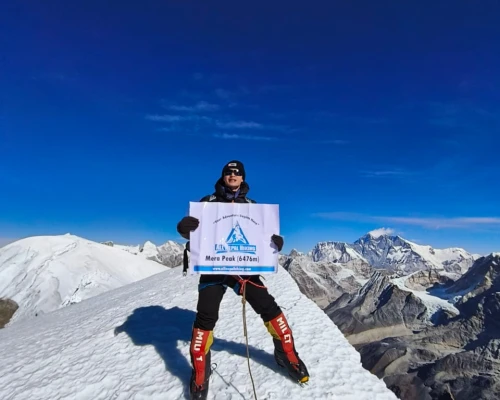
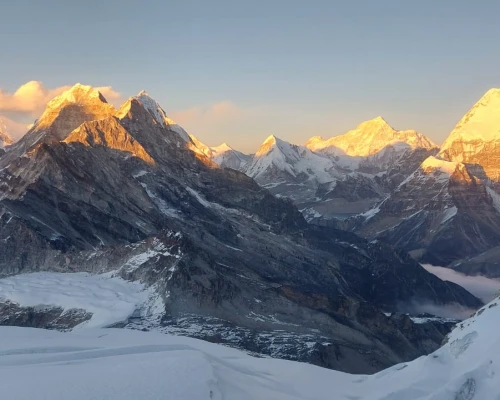
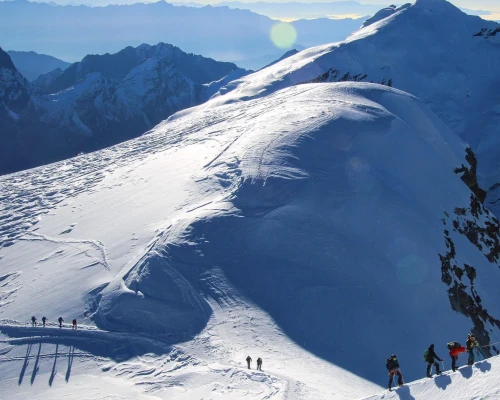
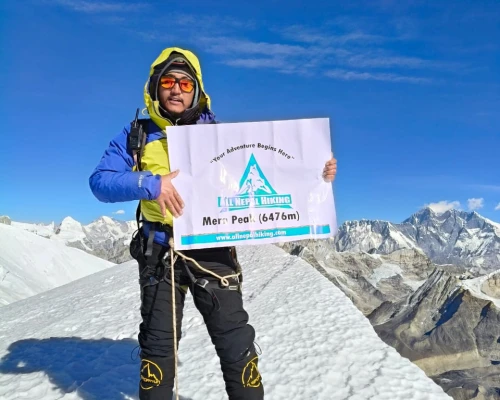
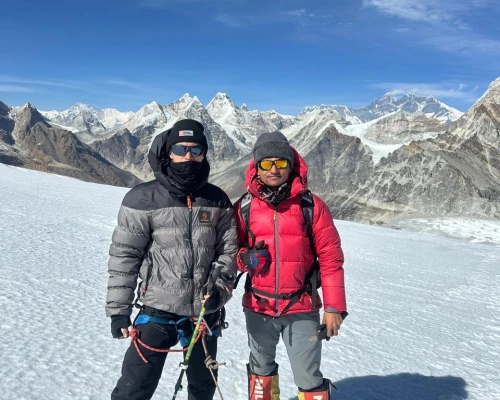
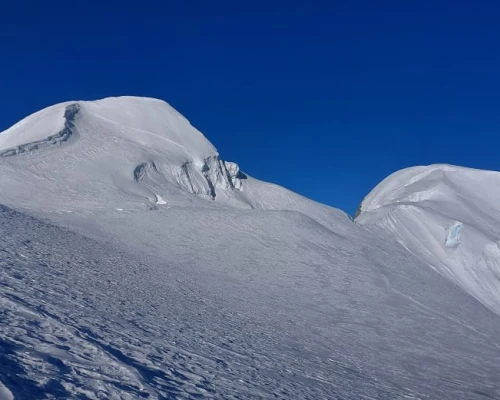
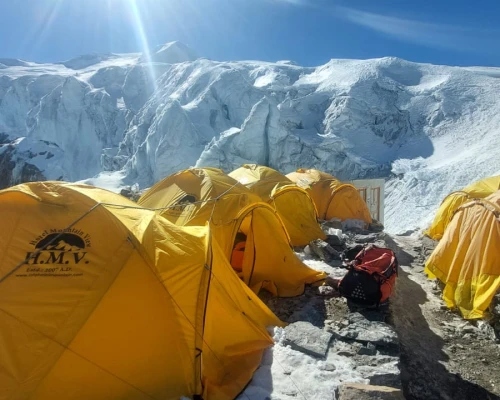
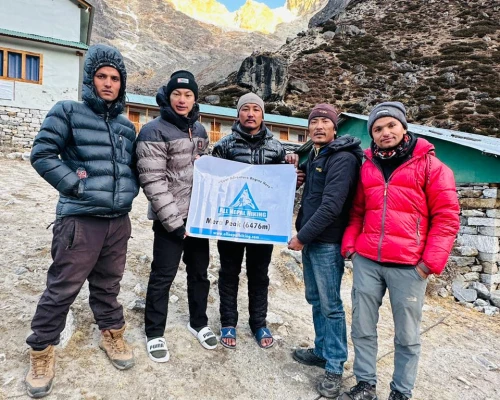
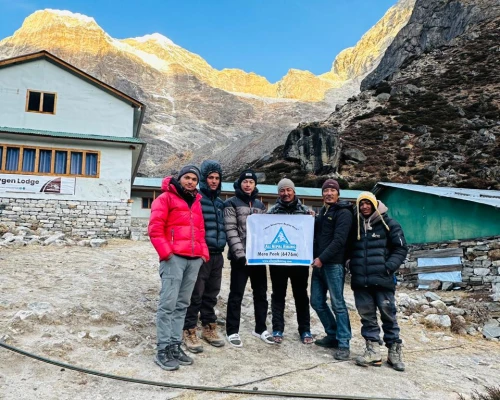
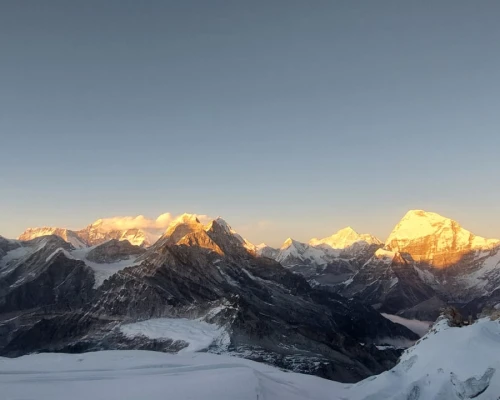
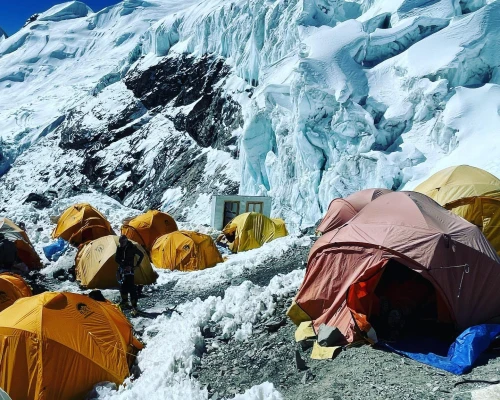
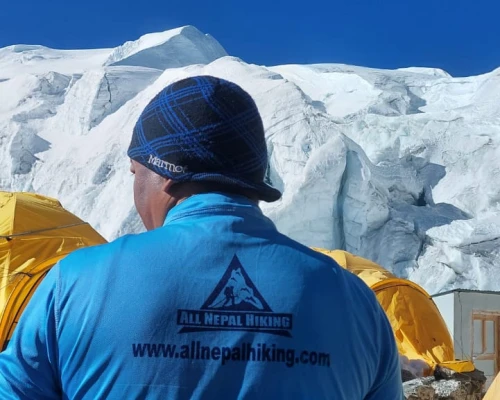

 based on 1 review
based on 1 review
